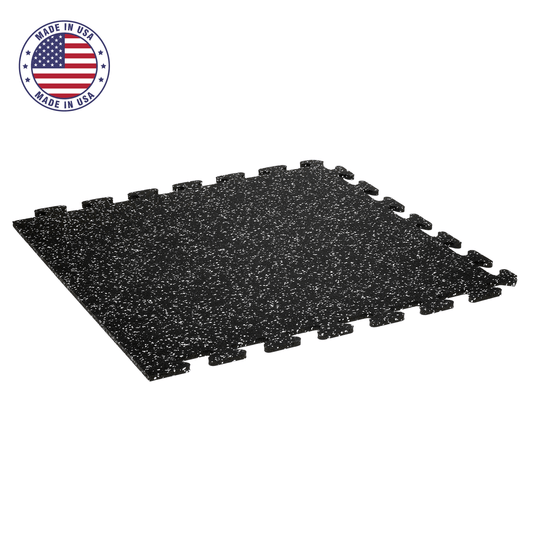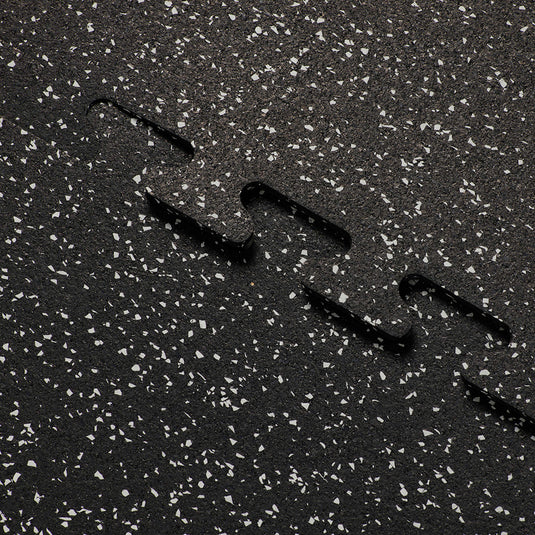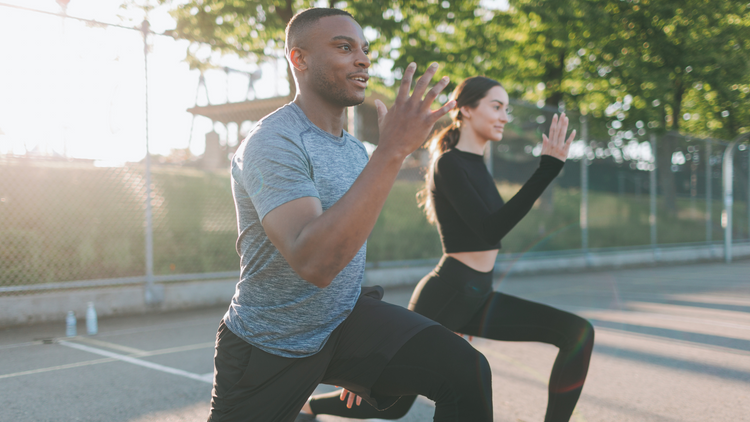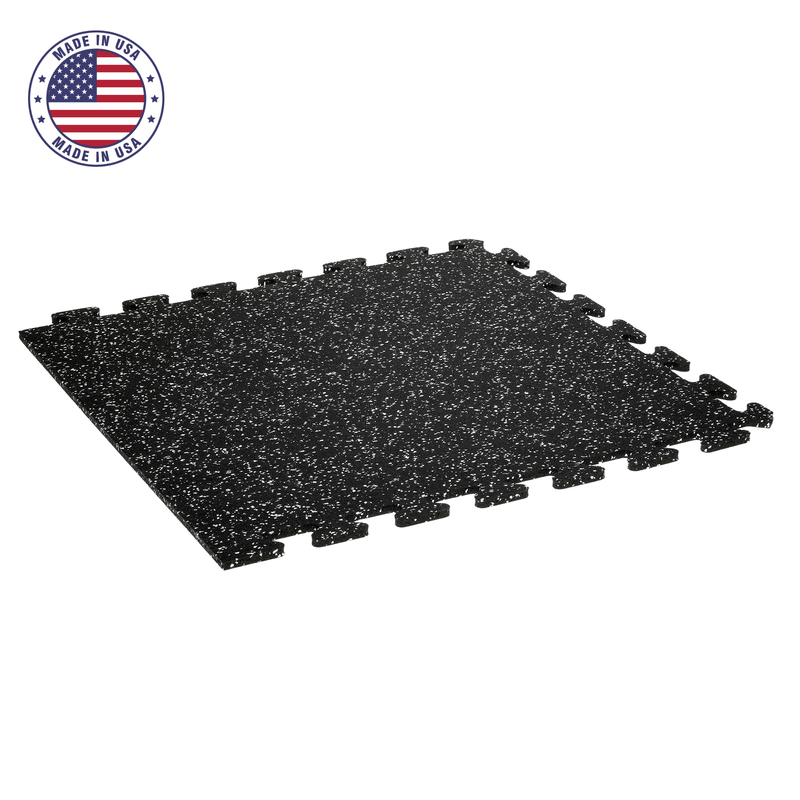

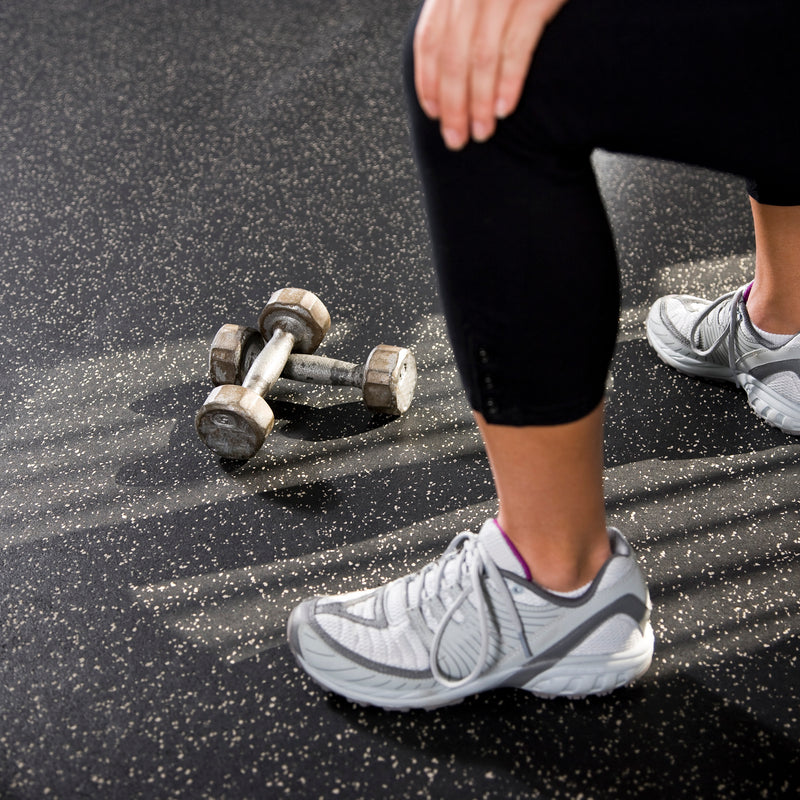
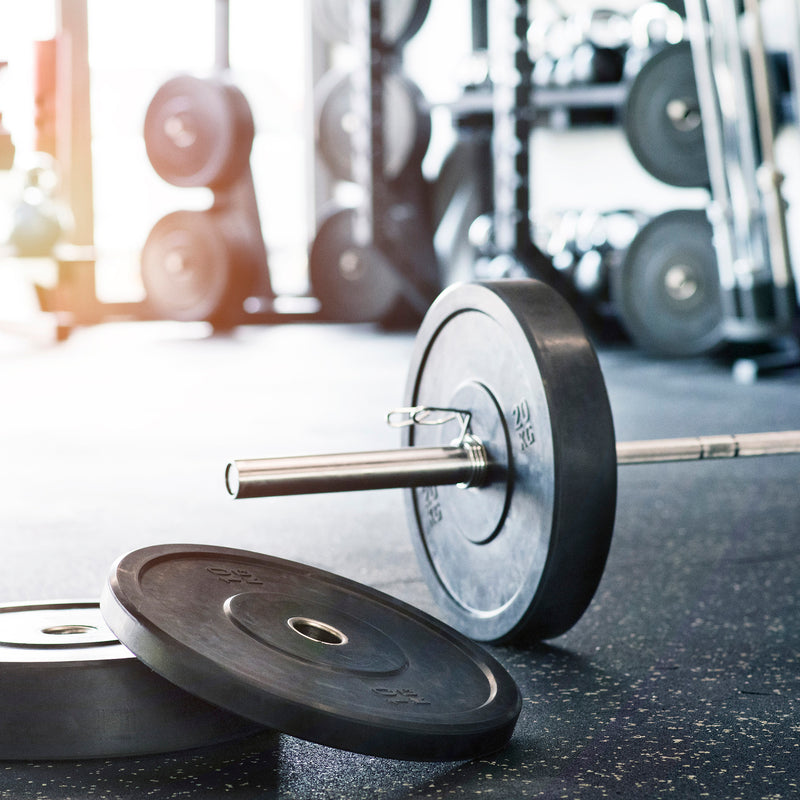
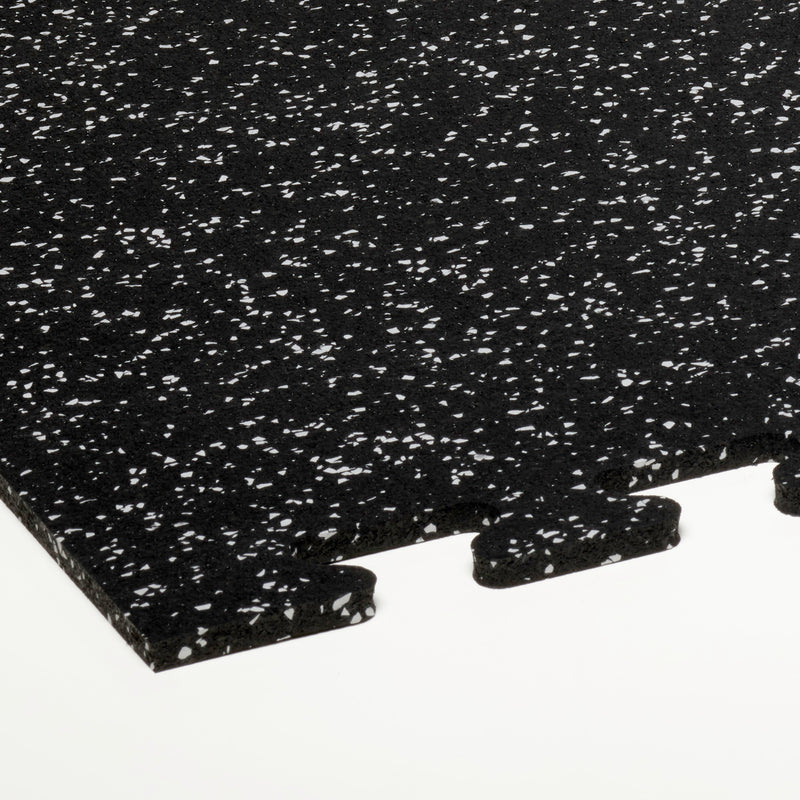
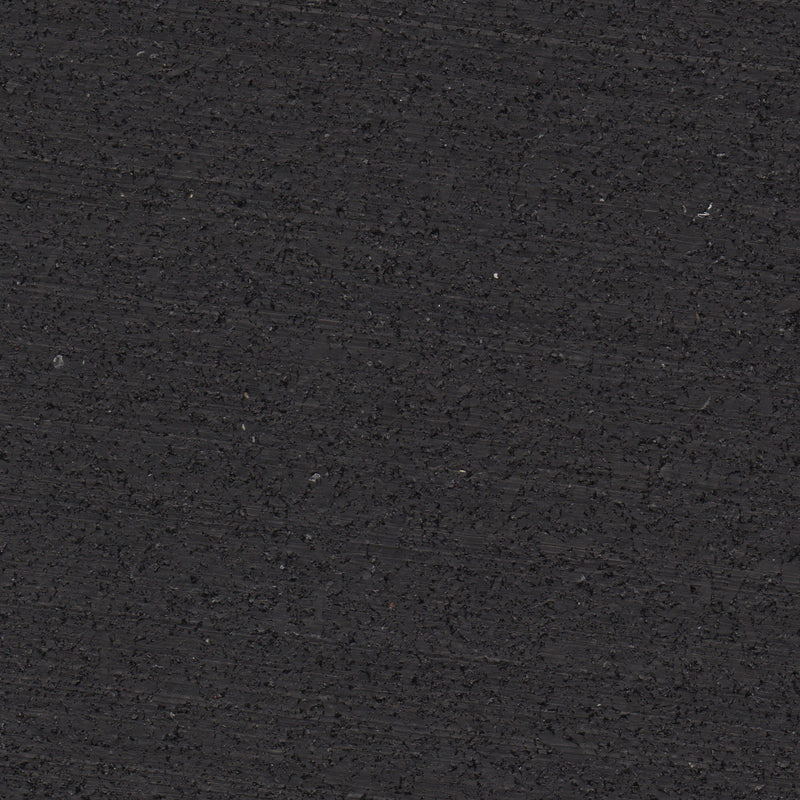
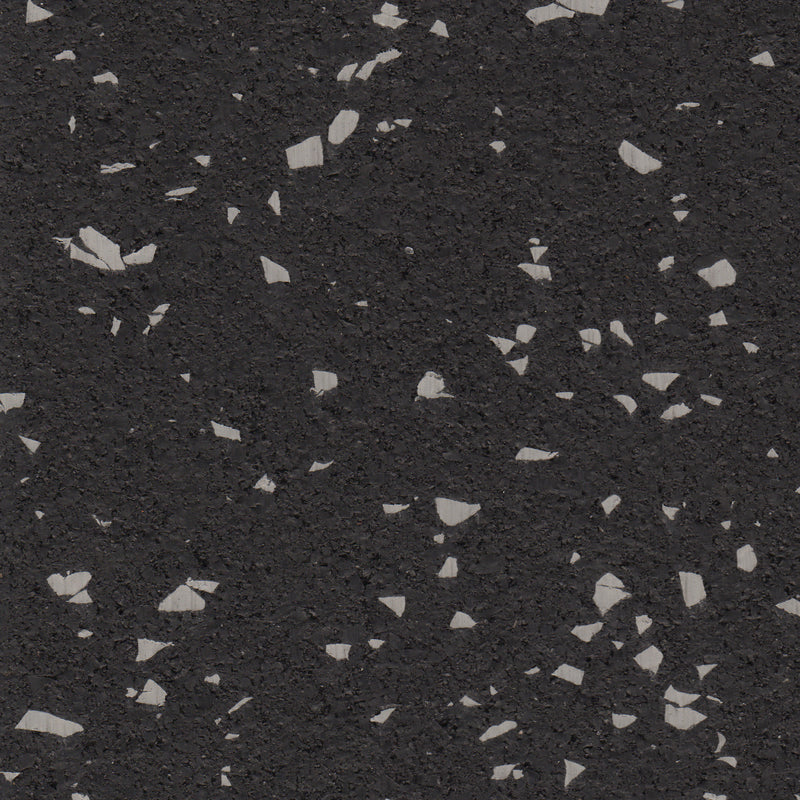
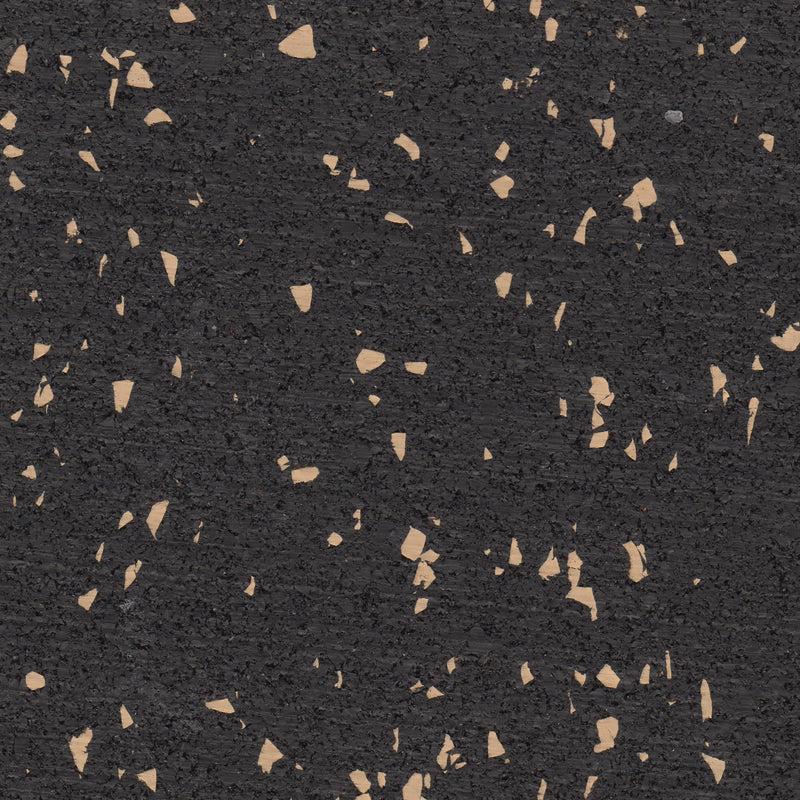
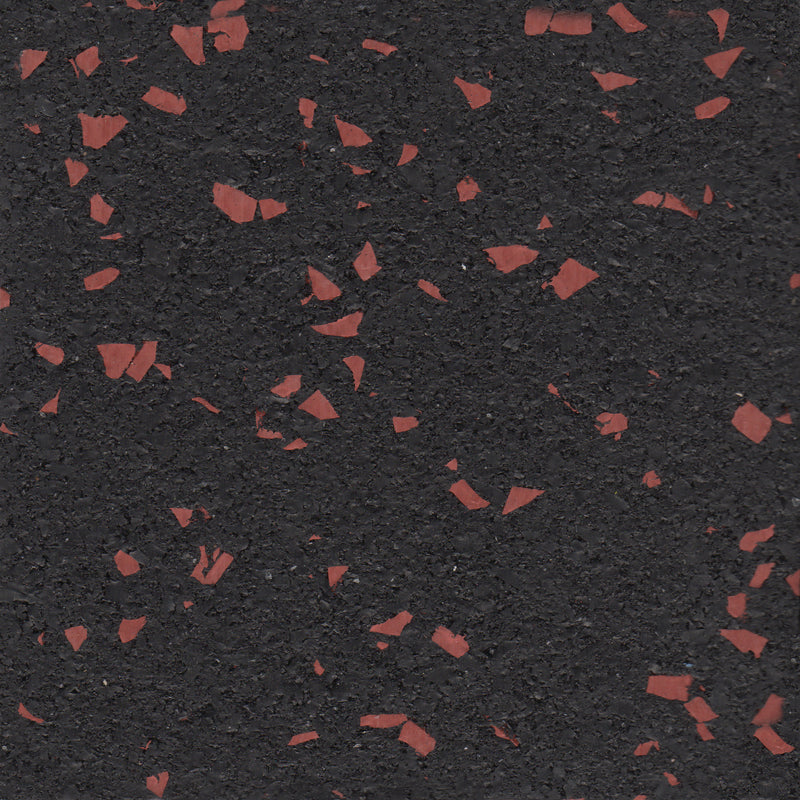
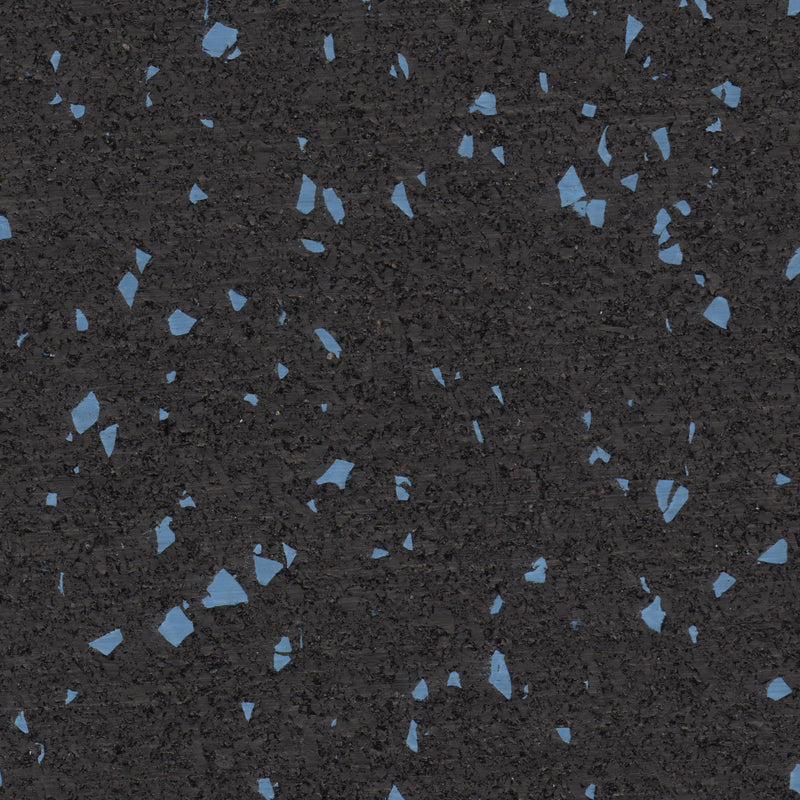
Fast, Free Shipping! Most Orders Received in Under 4 Business Days! We reach 96% of the United States in 3 days! Allow 4-6 business days for orders over 100 units.
Money Back Guarantee
- Shop confidently with a 30 Day Money Back Guarantee on Flooring. View here.
These 9mm (3/8") x 24" x 24" interlocking rubber tiles offer unmatched durability and simple installation for high-impact environments.
- More thickness and colors are available here.
How To Use This Page:
- Initial prices displayed are per tile.
- Use the calculator to enter your dimensions.
- The quantity of center, edge and corner tiles will automatically adjust based on the total number of square feet you enter
- All the tiles and quantity you need are recorded when you click 'Add to Cart'
- Quantity and price in cart will reflect total square feet you need as well as record the dimensions, edges, corners and center tiles Think you found a better deal somewhere? Email us at info@living.fit with the details to see if we an help.
Prices below are per tile with no additional cost for shipping. What you see is what you pay.
Designed to handle heavy lifting, cardio machines, and foot traffic, these tiles provide professional-grade protection for both commercial and home gyms.
When you use our calculator, we will automatically include in your order the number of corner, edge and middle pieces you need when you click 'Add to Cart'.
- Precision-cut 24" x 24" tiles fit tightly with virtually invisible seams
- No adhesives needed — reposition or move anytime
- Made from recycled rubber for toughness and eco-friendliness
- Slip-resistant and low odor for safe, clean workouts
- Proudly manufactured in the USA
Features & Benefits
- Precision Fit: Each tile measures 24" x 24" from straight edge to the center of tab, creating a flush fit once installed.
- Made in the USA: Proudly produced with American manufacturing standards using quality recycled materials.
- Easy Installation: Interlocks like puzzle pieces with no adhesives or special tools required.
- Modular and Reusable: Move or reconfigure your layout at any time — perfect for evolving spaces.
- Slip Resistant: Provides grip even in wet or high-sweat areas for safer workouts.
- Low Odor: Made from cleaned, shredded rubber with reduced smell compared to traditional rubber mats.
- Durable and Impact-Resistant: Withstands heavy weights, machines, and high foot traffic.
- Seamless Appearance: Tightly interlocked edges create a clean, finished look with virtually invisible seams.
- Eco-Friendly: Manufactured from recycled SBR tire rubber and EPDM flecks — good for your gym and the planet.
How It Compares
Compared to rolled rubber flooring, these 3/8" interlocking tiles offer easier installation and repositioning with no tools or adhesives. While rolls are great for covering large areas quickly, tiles provide flexibility for future layout changes and replacements. For thicker protection, consider our gym flooring collection with 1/2" or thicker options.
Read more about selecting the right flooring in Gym Flooring Blog
FAQs
+ Are these tiles truly 24"x24" once installed?
Yes, each tile measures 24" x 24" from straight edge to the center of the tab, providing a true 24" x 24" coverage per tile when interlocked.
+ Do I need glue or tape to install these tiles?
No adhesives are required. These tiles are designed for a loose lay fit and will stay in place once interlocked.
+ Can I use these tiles in a commercial gym?
Absolutely. These 3/8" tiles are performance-tested for high-traffic and heavy-use areas including commercial gyms.
+ Are they easy to clean?
Yes, just use a damp mop or mild cleaner. Their tight seams also help keep debris from getting between tiles.
+ Are these made from safe materials?
Yes. They’re made from shredded, cleaned SBR tire rubber and colorful EPDM flecks — environmentally friendly and low odor.
Rolled Rubber Flooring Installation Guide
Tape or glue is not required for simpler home gym set ups. For high-traffic areas or spaces without climate control, glue is ideal to ensure a long-lasting, secure installation with tightly sealed seams that withstand temperature changes. For DIY projects or temporary setups—especially in leased spaces—double-sided tape offers a reliable, non-permanent solution that keeps tiles in place without the need for adhesive.
A. Double-Sided Tape Installation
- Make sure the subfloor is clean, dry, and free of debris.
- Lay the rubber rolls loosely in the room to create your layout. Allow them to relax for 24–48 hours.
- Rubber rolls may be directional. Make sure the color matches across all rolls. If not, try flipping or rotating the rolls 180 degrees.
- Cut the rolls to fit using a straight edge and a sharp utility knife. Leave a small gap around the edges (roughly the thickness of the roll) to allow for expansion.
- Roll back one end of each roll and apply double-sided tape along the perimeter of the subfloor.
- Apply the tape directly to the subfloor—typically one line of tape on each seam and at the perimeter—to hold the flooring securely in place.
- Once the tape is applied, carefully press the rubber flooring onto it, smoothing out any bubbles and ensuring the edges align tightly. This method is ideal for DIY projects, leased spaces, or areas where permanent adhesives aren't suitable.
- Press the rubber back into place on top of the tape.
- VIEW TAPE HERE
B: Full Adhesive (Glue-Down) Method
- Confirm that the subfloor is clean, dry, and free from any residue or moisture.
- Place the rubber rolls loosely on the floor to determine layout and allow them to relax for 24–48 hours before permanent installation.
- Tip: As with the tape method, check that all rolls align in both color and pattern. Rotate or flip rolls if there are noticeable differences.
- Use a straight edge and a sharp utility knife to cut the rolls to the required dimensions, leaving a perimeter gap for expansion.
- Roll up one end of a section and spread a thin layer of polyurethane-based adhesive over a 10-foot stretch of subfloor.
- Gradually unroll the flooring onto the adhesive in 10-foot sections, continuing until the entire length is in place.
- Once the rolls are fully adhered, go over the surface with a 100-pound roller to ensure strong bonding. If a roller isn’t available, walking over the surface using short, firm steps can also help.
- View glue here or as an add on item. on this page
Initial Cleaning Procedure
- Remove all surface soil, debris, sand, and grit by sweeping, dust
mopping or vacuuming. - Scrub floor with recommended Rubber Floor
Cleaner with a rectangular microfiber mop. A soft nylon brush may be
used in more heavily soiled areas. - DO NOT flood the floor with water as the Interlocking design will allow
water to pass through
Regular Cleaning Procedure
- Sweep, dust mop, or vacuum floor to remove surface soil, debris,
sand, and grit. - Damp mop with a microfiber mop using Rubber Floor Cleaner
Restorative Cleaning Procedure
- Sweep or vacuum to remove loose soil.
- Heavy scrub using a rotary scrubber or automatic scrubber with Brown or Black Stripper pad and solution of Rubber Floor Cleaner.
- Pick up solution with wet vac
- Rinse with clean water. Do not flood the floor.
- Allow the floor to thoroughly dry.
If my room doesn't fit exactly into the parameters of the tiles, how do I ensure there are no empty spaces?
This is incredibly common because as you can imagine there is no uniform room size. We recommend a couple of things: 1) Use our flooring calculator (linked above) to get the recommendation. You can always order more if you need to after you determine how the room looks and feels 2) Your options would either then be to have some non-covered portion (this is most likely fairly small) or order extra (the calculator can account for this) and then cut the pieces on the ends with an exacto knife to make it fit perfectly. We are glad to walk through that math with you.
What is the difference between these and your 18 inch tiles?
These are the same materials, just cut to different sizes
REVIEW
"These are great! They're not cheap like the foam flooring mats that most stores sell. They're pretty thick too, and they're easy to clean. I highly recommend them!"
"I used the mats to protect my flooring for my power rack. It's done it's job and also keeps sound muffled nicely during deadlifts. I also do floor exercises on them and they feel great.
"I would recommend these mats, especially as they come at an extremely competitive price point compared the competition. I will purchase additional mats in the future for other spaces in my home."
"Excellent choice for gym flooring- I bought these based on the high marks they received from GGR and am not disappointed. Compared to the larger flooring mats they are much easier to move around and get into your gym in the right place, and they were easy to put together."
Rolled Rubber Flooring Installation Guide
Tape or glue is not required for simpler home gym set ups. For high-traffic areas or spaces without climate control, glue is ideal to ensure a long-lasting, secure installation with tightly sealed seams that withstand temperature changes. For DIY projects or temporary setups—especially in leased spaces—double-sided tape offers a reliable, non-permanent solution that keeps tiles in place without the need for adhesive.
A. Double-Sided Tape Installation
- Make sure the subfloor is clean, dry, and free of debris.
- Lay the rubber rolls loosely in the room to create your layout. Allow them to relax for 24–48 hours.
- Rubber rolls may be directional. Make sure the color matches across all rolls. If not, try flipping or rotating the rolls 180 degrees.
- Cut the rolls to fit using a straight edge and a sharp utility knife. Leave a small gap around the edges (roughly the thickness of the roll) to allow for expansion.
- Roll back one end of each roll and apply double-sided tape along the perimeter of the subfloor.
- Apply the tape directly to the subfloor—typically one line of tape on each seam and at the perimeter—to hold the flooring securely in place.
- Once the tape is applied, carefully press the rubber flooring onto it, smoothing out any bubbles and ensuring the edges align tightly. This method is ideal for DIY projects, leased spaces, or areas where permanent adhesives aren't suitable.
- Press the rubber back into place on top of the tape.
- VIEW TAPE HERE
B: Full Adhesive (Glue-Down) Method
- Confirm that the subfloor is clean, dry, and free from any residue or moisture.
- Place the rubber rolls loosely on the floor to determine layout and allow them to relax for 24–48 hours before permanent installation.
- Tip: As with the tape method, check that all rolls align in both color and pattern. Rotate or flip rolls if there are noticeable differences.
- Use a straight edge and a sharp utility knife to cut the rolls to the required dimensions, leaving a perimeter gap for expansion.
- Roll up one end of a section and spread a thin layer of polyurethane-based adhesive over a 10-foot stretch of subfloor.
- Gradually unroll the flooring onto the adhesive in 10-foot sections, continuing until the entire length is in place.
- Once the rolls are fully adhered, go over the surface with a 100-pound roller to ensure strong bonding. If a roller isn’t available, walking over the surface using short, firm steps can also help.
- View glue here or as an add on item. on this page
Initial Cleaning Procedure
- Remove all surface soil, debris, sand, and grit by sweeping, dust
mopping or vacuuming. - Scrub floor with recommended Rubber Floor
Cleaner with a rectangular microfiber mop. A soft nylon brush may be
used in more heavily soiled areas. - DO NOT flood the floor with water as the Interlocking design will allow
water to pass through
Regular Cleaning Procedure
- Sweep, dust mop, or vacuum floor to remove surface soil, debris,
sand, and grit. - Damp mop with a microfiber mop using Rubber Floor Cleaner
Restorative Cleaning Procedure
- Sweep or vacuum to remove loose soil.
- Heavy scrub using a rotary scrubber or automatic scrubber with Brown or Black Stripper pad and solution of Rubber Floor Cleaner.
- Pick up solution with wet vac
- Rinse with clean water. Do not flood the floor.
- Allow the floor to thoroughly dry.
If my room doesn't fit exactly into the parameters of the tiles, how do I ensure there are no empty spaces?
This is incredibly common because as you can imagine there is no uniform room size. We recommend a couple of things: 1) Use our flooring calculator (linked above) to get the recommendation. You can always order more if you need to after you determine how the room looks and feels 2) Your options would either then be to have some non-covered portion (this is most likely fairly small) or order extra (the calculator can account for this) and then cut the pieces on the ends with an exacto knife to make it fit perfectly. We are glad to walk through that math with you.
What is the difference between these and your 18 inch tiles?
These are the same materials, just cut to different sizes
REVIEW
"These are great! They're not cheap like the foam flooring mats that most stores sell. They're pretty thick too, and they're easy to clean. I highly recommend them!"
"I used the mats to protect my flooring for my power rack. It's done it's job and also keeps sound muffled nicely during deadlifts. I also do floor exercises on them and they feel great.
"I would recommend these mats, especially as they come at an extremely competitive price point compared the competition. I will purchase additional mats in the future for other spaces in my home."
"Excellent choice for gym flooring- I bought these based on the high marks they received from GGR and am not disappointed. Compared to the larger flooring mats they are much easier to move around and get into your gym in the right place, and they were easy to put together."
How Much Double-Sided Tape You Need for Rubber Flooring
Use double-sided tape to help keep rubber flooring in place, especially on smooth surfaces or in high-traffic areas where slippage or movement is a concern.
-
Perimeter Only (light use):
- Tape the outer edges only.
- Use ~1 foot of tape per foot of room perimeter.
- Example: 10'x10' room = 40 ft of tape.
-
Perimeter + Cross Strips (medium use):
- Add tape strips across the floor every 3–4 ft.
- Example: 10'x10' room = ~70 ft of tape.
-
Grid Style (heavy use, gym equipment):
- Create a full grid every 2–3 ft in both directions.
- Example: 10'x10' room = 140+ ft of tape.
Quick Estimate by Room Size
- 100 sq ft: Light: 40 ft · Medium: 70 ft · Heavy: 140 ft
- 200 sq ft: Light: 60 ft · Medium: 100 ft · Heavy: 200 ft
- 400 sq ft: Light: 80 ft · Medium: 140 ft · Heavy: 280 ft
Pro Tips
- Tape comes in 25 ft, 50 ft, or 100 ft rolls — round up.
- Use tape made for rubber flooring and your subfloor type.
- Let flooring sit in the room for 24 hours before taping.
How Much Flooring Adhesive You Need for Rubber Flooring
If you're using flooring adhesive instead of tape, it's important to apply the correct amount based on the surface area and type of installation—full glue-down or perimeter-bond.
-
Perimeter-Bond Installation (light to medium use):
- Apply adhesive only around the edges of each tile or roll.
- Best for home gyms or spaces without heavy equipment.
- Requires less adhesive overall—roughly half the amount of a full glue-down.
-
Full Glue-Down Installation (heavy use or commercial):
- Adhesive is applied across the entire surface area.
- Ideal for high-traffic zones or rooms with heavy equipment.
- Provides the most secure bond but requires more product and prep time.
-
Adhesive Types:
- Use pressure-sensitive adhesive for easier repositioning.
- Use urethane adhesive for permanent, high-performance bonds.
- Follow manufacturer guidelines for trowel size and spread rate.
Quick Estimate by Coverage
- 1 gallon (128 oz): Covers ~150–200 sq ft (full coverage)
- Perimeter-bond: Covers ~250–300 sq ft per gallon
- Rolls & sheets: May require more adhesive depending on thickness
Pro Tips
- Always clean and dry the subfloor before applying adhesive.
- Use the correct trowel notch size for your adhesive type.
- Let adhesive cure fully before moving equipment onto the floor.

